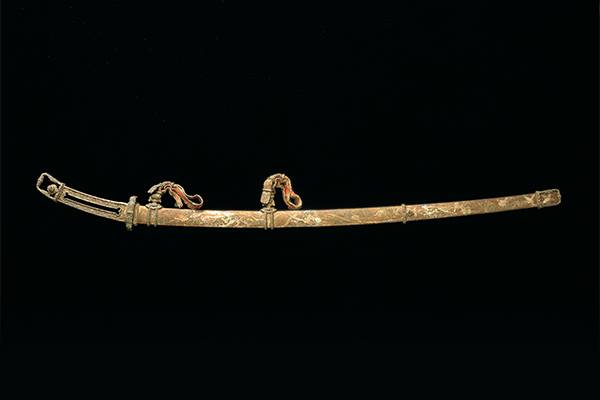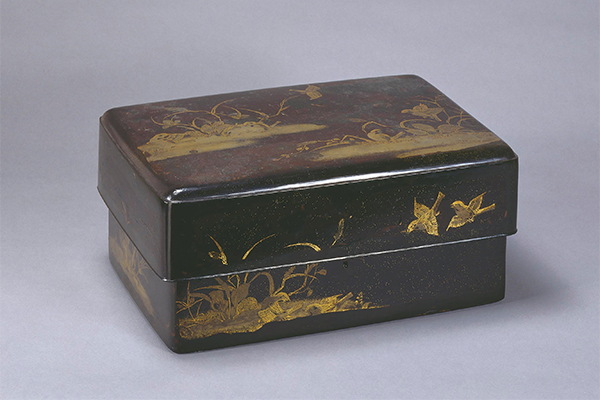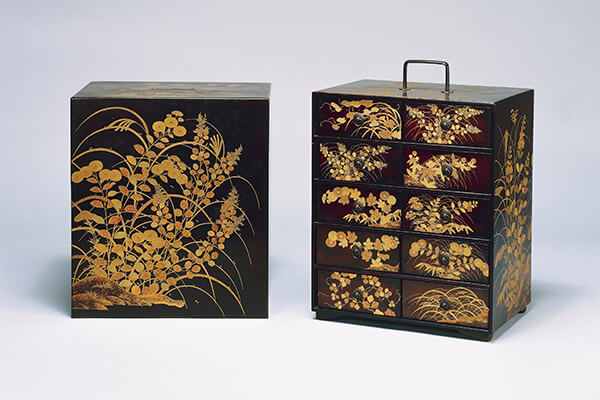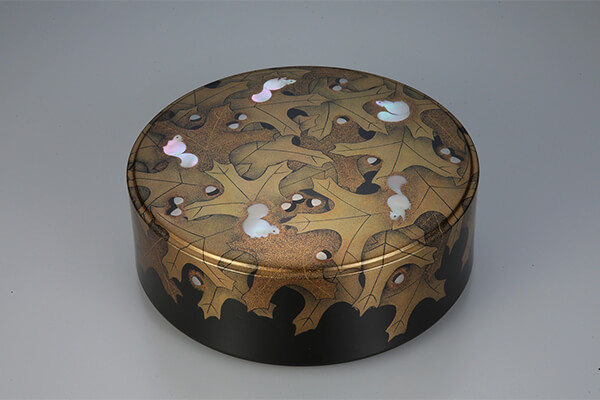Maki-e (lit. sprinkled picture) is the art of painting with urushi (lacquer) and sprinkling gold or silver powders onto it to produce pictorial designs. In Japanese culture it has long been a symbol of Japanese-style beauty.
This exhibition, jointly organized by MOA Museum of Art, Mitsui Memorial Museum of Art, and the Tokugawa Art Museum, showcases selected masterpieces of maki-e representing each era from the Heian period (794-1192) onwards, together with those of contemporary Living National Treasures. Also on view are illustrated scrolls such as the National Treasure Tale of Genji Picture Scrolls (owned by the Tokugawa Art Museum), folding screens, Buddhist sacred texts, calligraphy, and Nō theater implements. Through the display of 188 items at the three museums, including 25 National Treasures and 50 Important Cultural Properties, this exhibition traces the legacy of beauty created by the Japanese people.
We hope this exhibition will serve as an opportunity to deepen the understanding not only of maki-e but also lacquerware, as well as other arts, crafts, and Japanese culture in general, and to pass them on to the next generation.
Magnificent Maki-eTales of Urushi and Gold over a Thousand Years
This exhibition has ended.
We thank you all for your visit.
We thank you all for your visit.
-
National Treasure
Tachi (long sword) Mounting with Inlaid Mother-of-pearl on a Gold Ground with a Tweezer-shaped Opening
Heian period, 12th century
Kasuga Taisha Shrine, Nara -
National Treasure
Sutra Box with Illustrations of Buddhist Virtues in Maki-e
Heian period, 10th century
Fujita Museum, Osaka -
Important Cultural Property
Tebako Box with Sparrows in a Field in Maki-e
Heian period, 12th century
Kongōji Temple, Osaka -
National Treasure
Writing Box with Chrysanthemums and Fence in Maki-e and Inlaid Mother-of-pearl
Kamakura period, 13th century
Tsurugaoka Hachimangū Shrine, Kanagawa -
National Treasure
Sutra Box with Hōsōge (floral scrolls) in Maki-e
Heian period, 11th century
Enryakuji Temple, Shiga -
Important Cultural Property
Tebako Box with Figures and Landscape in Maki-e
Kamakura period, 14th century
MOA Museum of Art, Shizuoka -
Tebako Box with the Five Main Festivals of the Year in Maki-e
Shibata Zeshin (1807–1891)
Edo to Meiji period, 19th century
Suntory Museum of Art, Tokyo -
Important Cultural Property
Chest for Poetry Collections with Autumn Plants in Maki-e
Momoyama period, 16th century
Kōdaiji Temple, Kyoto -
National Treasure
Pair of Containers for Shell-matching Game with the Hatsune Motif from the Tale of Genji in Maki-e
Kōami Chōjū
Edo period, Kan’ei 16 (1639)
The Tokugawa Art Museum, Aichi -
National Treasure
Writing Table and Writing Box with the Hatsune Motif from the Tale of Genji in Maki-e
Kōami Chōjū
Edo period, Kan’ei 16 (1639)
The Tokugawa Art Museum, Aichi -
National Treasure
Writing Box with Pontoon Bridge in Maki-e
Attributed to Hon’ami Kōetsu
Edo period, 17th century
Tokyo National Museum
Image: TNM Image Archives -
Round Box with Maki-e and Inlaid Mother-of-pearl, Melodious Autumn
Murose Kazumi (1950– )
Heisei 29 (2017)
POLA Foundation of Japanese Culture, Tokyo














